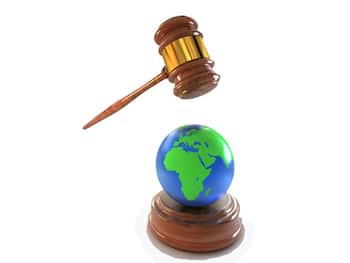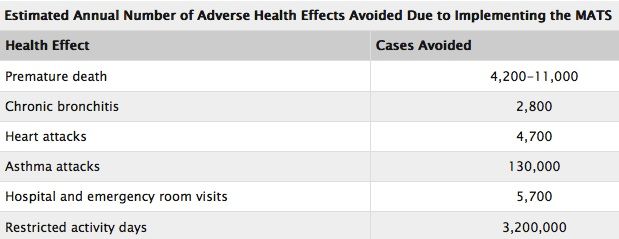The U.S. Environmental Protection Agency (EPA) scored a huge court victory recently, with the U.S. Court of Appeals for the District of Columbia ruling that the agency’s Mercury and Air Toxics Standard (MATS) is within the EPA’s realm of enforcement.
The rule, which was put in place in 2012 and would take effect later this year, would tighten the reins on coal-fired power plant pollution. The legal challenge was brought by the dirty energy industry along with several states that contended that the new standards would cost the industry too much money.
The three-judge panel found that the rule did not overstep the EPA’s authority, although one of the justices did dissent on part of the ruling. Judge Brett Kavanaugh said that he believed that the EPA did not consider the overall costs to the industry when they made the rule, even if the agency did conclude that the benefits outweigh the costs (that they allegedly didn’t consider).
It is worth noting that Kavanaugh was appointed to the bench by former president George W. Bush after helping Bush craft a plan to pack the courts with conservative justices. Prior to his position within the Bush administration, Kavanaugh worked for the corporate defense firm of Kirkland & Ellis, the firm currently representing BP for their negligence in the Deepwater Horizon oil spill disaster.
The specific language that was targeted was the phrase “appropriate and necessary,” which appears in the Clean Air Act and is the phrase that gives the EPA the authority to enact new standards. The court found that the industry’s challenge that the rule was neither appropriate nor necessary was flawed.
The real issue in the case is that the industry does not want to pay to clean up their operations. However, some companies have already installed the necessary equipment to capture mercury and other toxic pollution.
In fact, estimates show that almost 60% of the coal-fired power plants in the country are either using mercury capture and cleaning technology, or their emissions are so low that they do not qualify. And contrary to industry claims, the cost of the new equipment has almost no effect on consumer electricity prices and the companies’ bottom line.
This makes Judge Kavanaugh’s dissent all the more confusing. If, as he claims, the EPA did not take the true costs of implementation into consideration, it’s a simple calculation to make: Kavanaugh estimated that the rule will cost the industry (as a whole) as much as $9.6 billion a year.
The coal industry already receives at least $230 million a year in federal tax breaks, on top of as much as $14 billion in direct subsidies. Even if implementation cost upwards of $10 billion a year, that still doesn’t account for all of the corporate handouts coming from the federal government, so the technology is essentially free.
And that’s only half of the equation. We still have to factor in the cost of not implementing the MATS rule.
According to the EPA, the rule will save American taxpayers between $37 and $90 billion a year. This is the amount that taxpayers have to shell out for things like lost productivity, uninsured medical care, and overall economic drain. Those figures alone show that the benefits are in a completely separate league from the costs.
We also can’t forget the non-monetary costs/benefits, which the EPA shows:
The industry will attempt to use their usual scare tactics to convince Americans that they will be the ones footing the bill for the new rule. But the truth is that we already are paying the price for not having this technology installed.
Americans need to ask themselves if they are willing to step up and pay to protect themselves, their loved ones, and future generations. My guess is that if one of those 11,000 lives saved per year is someone they care about, they’ll be more than happy to pay a few more cents per month on their utility bill.
Subscribe to our newsletter
Stay up to date with DeSmog news and alerts







